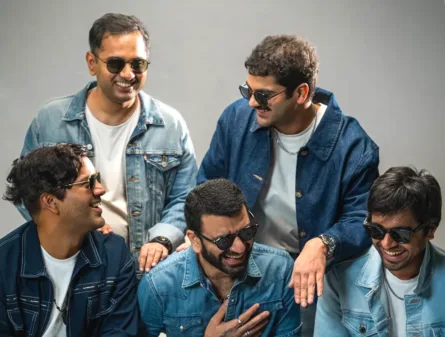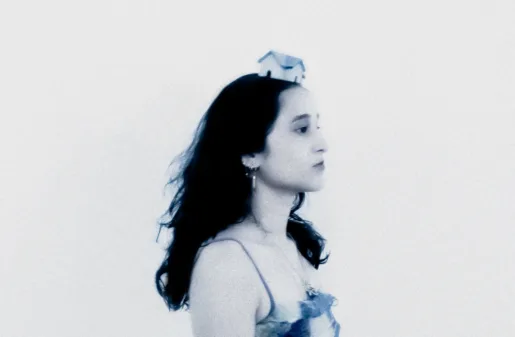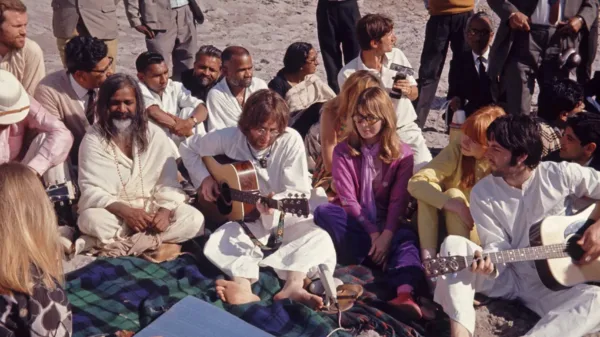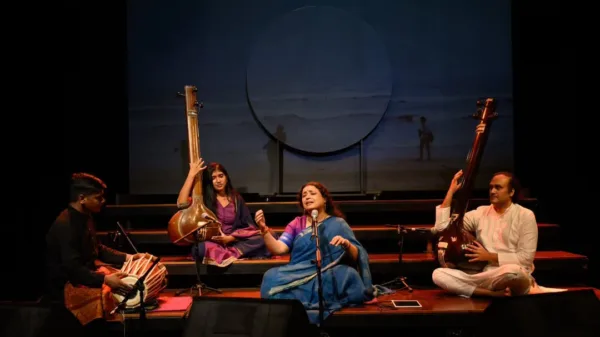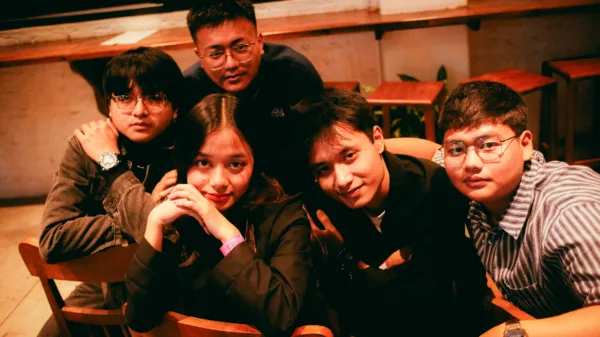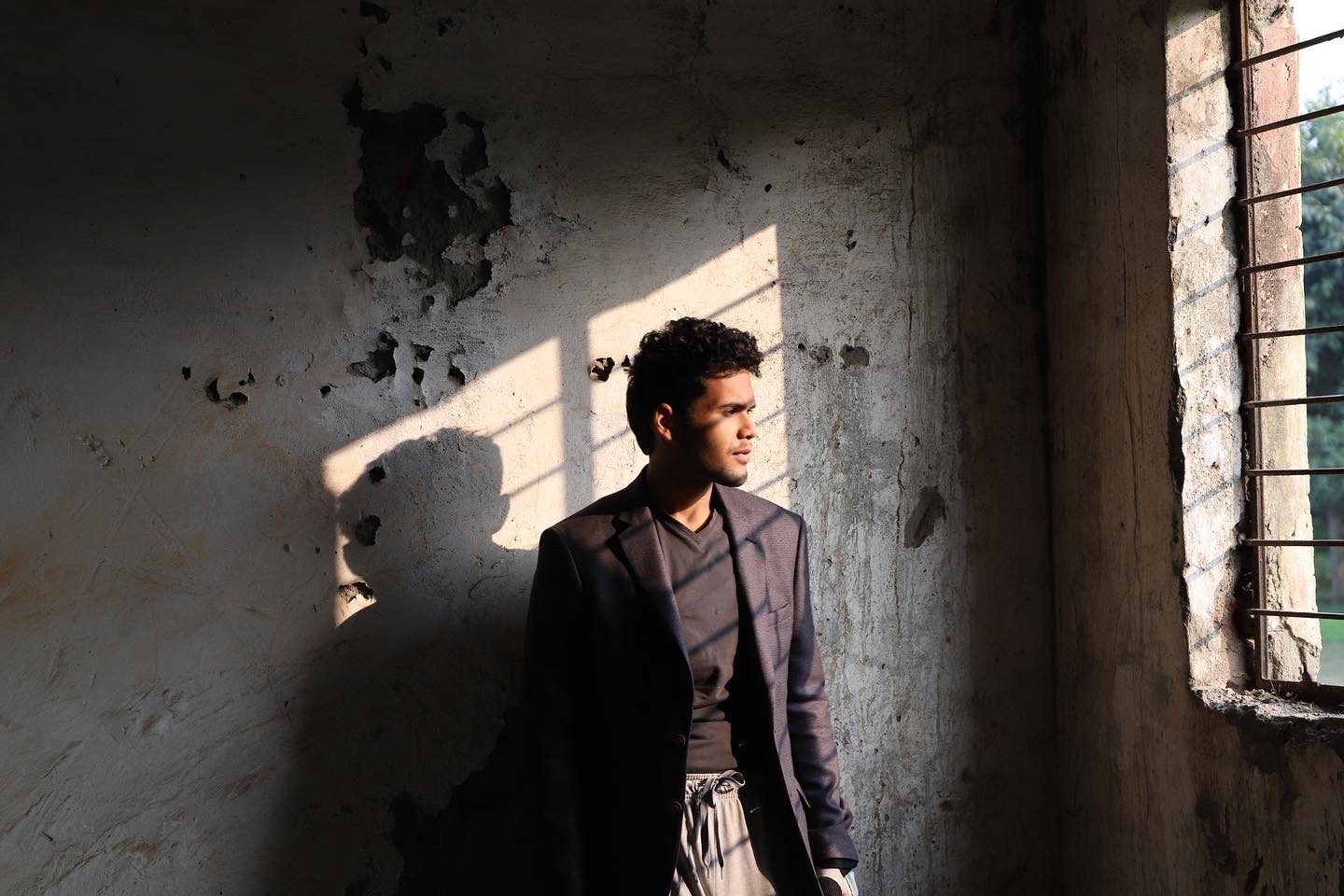In the vast, ever expanding silt plain of Indian independent music, where vegetation is overrun by singular-word titles to albums that sound like banality had to be liquefied and put into every line of production, The Traffic Horn Orchestra piques interest when it appears as the name of an EP — and Arvasu, the man behind the name and the sounds on this project manages to expand and stretch that interest throughout the course of it. Divided into four acts that [mostly] wordlessly meander through a film-score like storytelling, this is one of the most promising records that I have heard when it comes to producer-led projects of this year so far. Part of it reminds me of the sample-flipping project done by Ajinkya Nair some time ago, titled The Kachra Files — especially When An Asian Orchestra Goes To The Bad Part of The Town. Most of it reminds me of a Bombay Velvet-esque imagination of a city – and it adds up considering Raghu Rai’s Mumbai is one of the inspirations behind the cover art.
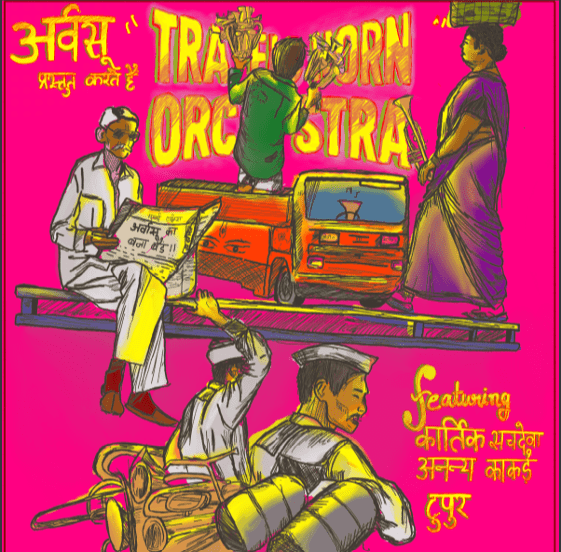
The four acts are titled as follows : Story Behind the Album, Act I, Making Sense, Act II, Homecoming, Act III, and Spring Comes, Act IV. Arvasu describes the first act as, “The album captures the journey of moving to a new city and making sense of it. To tell the story of varieties of textures have been used to show how the initial moment of encountering a completely new environment leaves someone unable to make sense of the world. The first half of the album contains atonal soundscapes which borderline a haunting film score. Later these two tracks turn into electronics which is supposed to emulate escapism.” The first two tracks are Traffic Horn Orchestra, Day 1 and Can’t live my life on a Loop and they fall inside the lines drawn around the first act – and you can hear the disjointed sounds kind of placed at random – with jazzy saxophone notes, and you can understand the cultural imagination of the city space that the artist subscribes to. With loops that remind you of Bolly-noir, and the use of electro-jazz to build up something akin to a chase sequence on the Can’t Live My Life On Loop – you realize that this is as much about sensation as it is about the progression of a feeling. Arvasu is not hiding behind his music, his music is him constructing meticulously a vision that he wants us to witness, audibly.
Act II of the album continues “from the idea that you can’t live your life on a loop and you have to change and adapt to the challenges presented to you. In the second act, the initial chaos turns into intensity with screaming horns sections and syncopated grooves. However, still aggressive and raw, these new soundscapes contain a lot moredirection and capture the struggles of changing willingly. Finally, these lead to a moment of true vulnerability with the song “Koi Aur”.
The horns-drums pairing is not an unexpected combination to anticipate anything when it comes to sounds born out of a city, but it all works really well here, because you realize what the artist is trying to convey.
While it might be cliched to pick the only song that has vocals on it on the record, my favorite from this record is “Koi Aur / Na” — which is a nice breather from all the organized chaos that has built up to this point. The song is simple, resting on acoustic guitar strumming and a slightly reverbed line of vocals — it is gentle, and almost functions as an interlude of this roughly 15 minute EP. The artist writes about the third act, Homecoming – which is a good transition from confusion into nostalgia and sentimentality. The artist writes, “This song [Koi Aur] questions the participation of oneself in their own life. The song “Over and Over” concludes this homecoming with well-thought-out western/ Hindustani soundscapes which happen with but not against the weighted sound of the pakhawaj. The end of the song “Over and Over” brings back all the elements from before and makes them work with each other without conflict.” Over and Over is lovely, and its fusion sensibilities make sense, especially when synced with a guitar.
The artist closes the record with Spring Comes (Only At Her Whim) – which is quite evidently the metaphorical cloud of worry and despair clearing up in sound-form, what with the keys and the droning sounds that start off the concluding song in pairing. “After the storm ends, spring comes. The last track of the album shows the horns taking a backseat, they sit wayback in the mix and say only as much as is needed., The flowers of meaning bloom and calm ensues. Meaning has arrived, at least for now, ” the artist writes. This song is gentle, and yet sounds like the turn of a windmill and the beginning of a road rage not undertaken, before it all shuts down.
This record is a room of many colors, and one grows to appreciate the soundtrack – it almost feels like a bildungsroman of sorts. The artist experiments with one continuous texture — that of disarray while also having a circular arc, of departure, experience, return, and another departure, this time a more educated one. This is a good, solid EP – and Arvasu’s music box of curated and created sounds is one that you can keep with you for quite some time, till he comes back with another.






